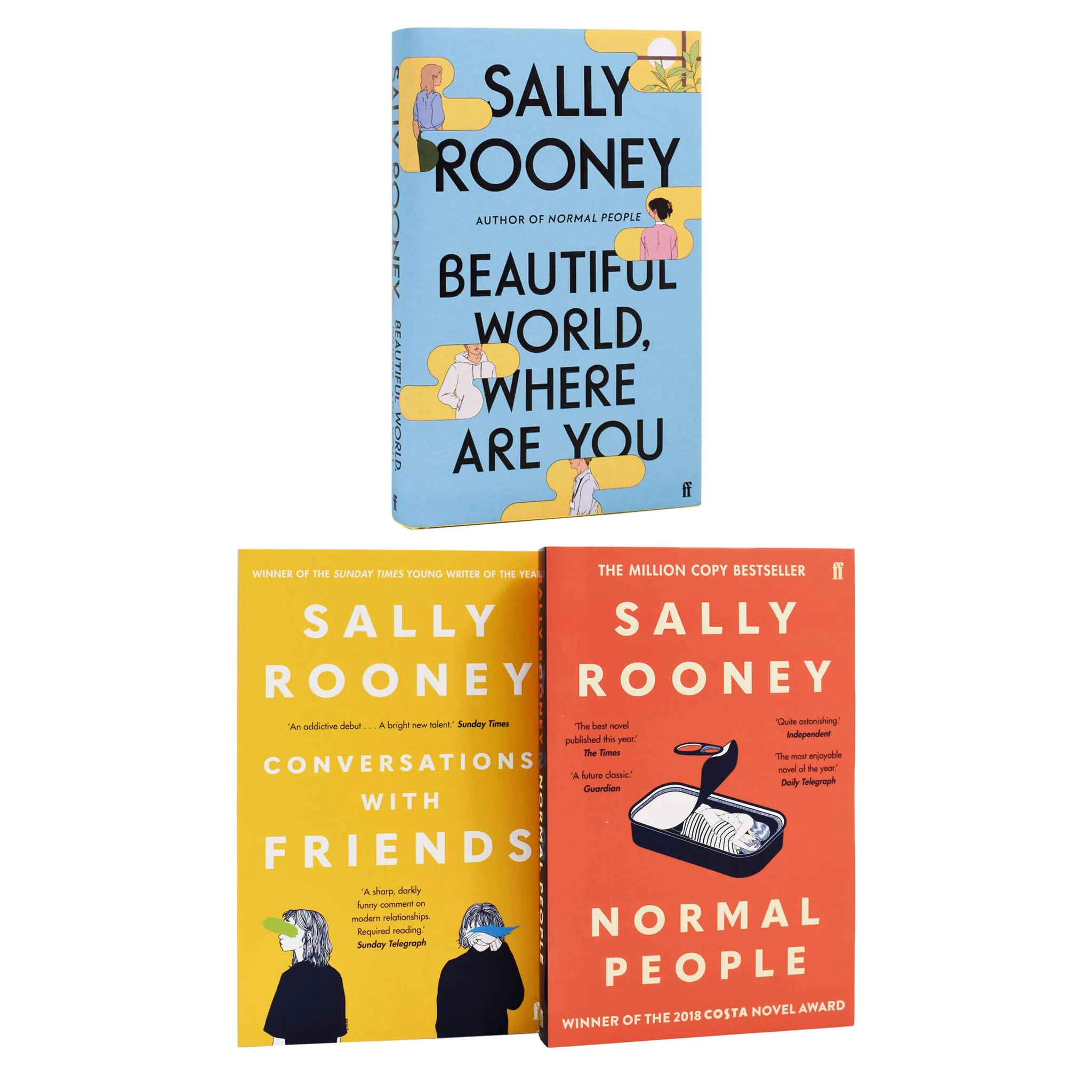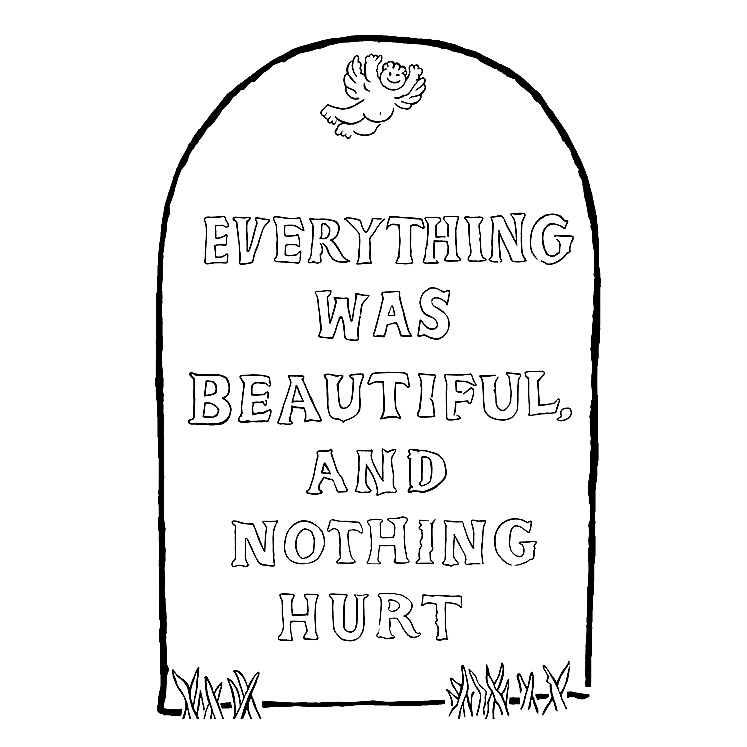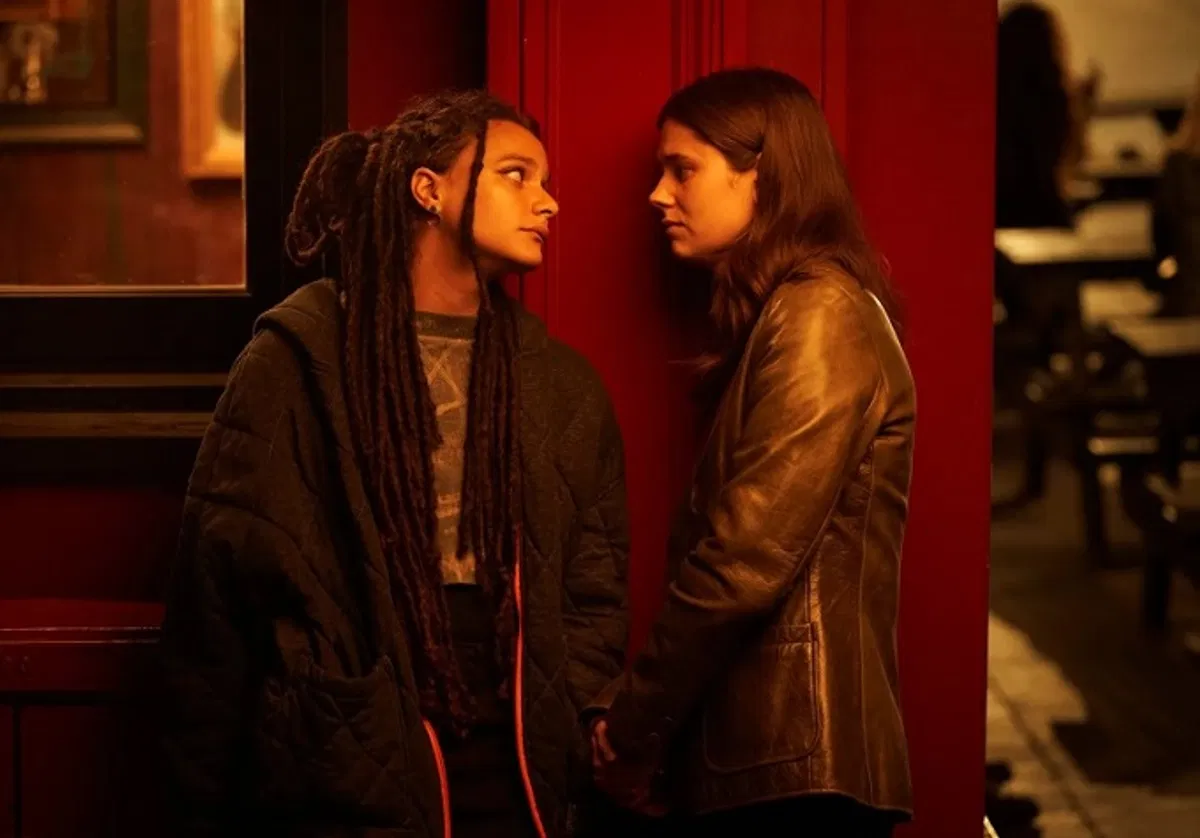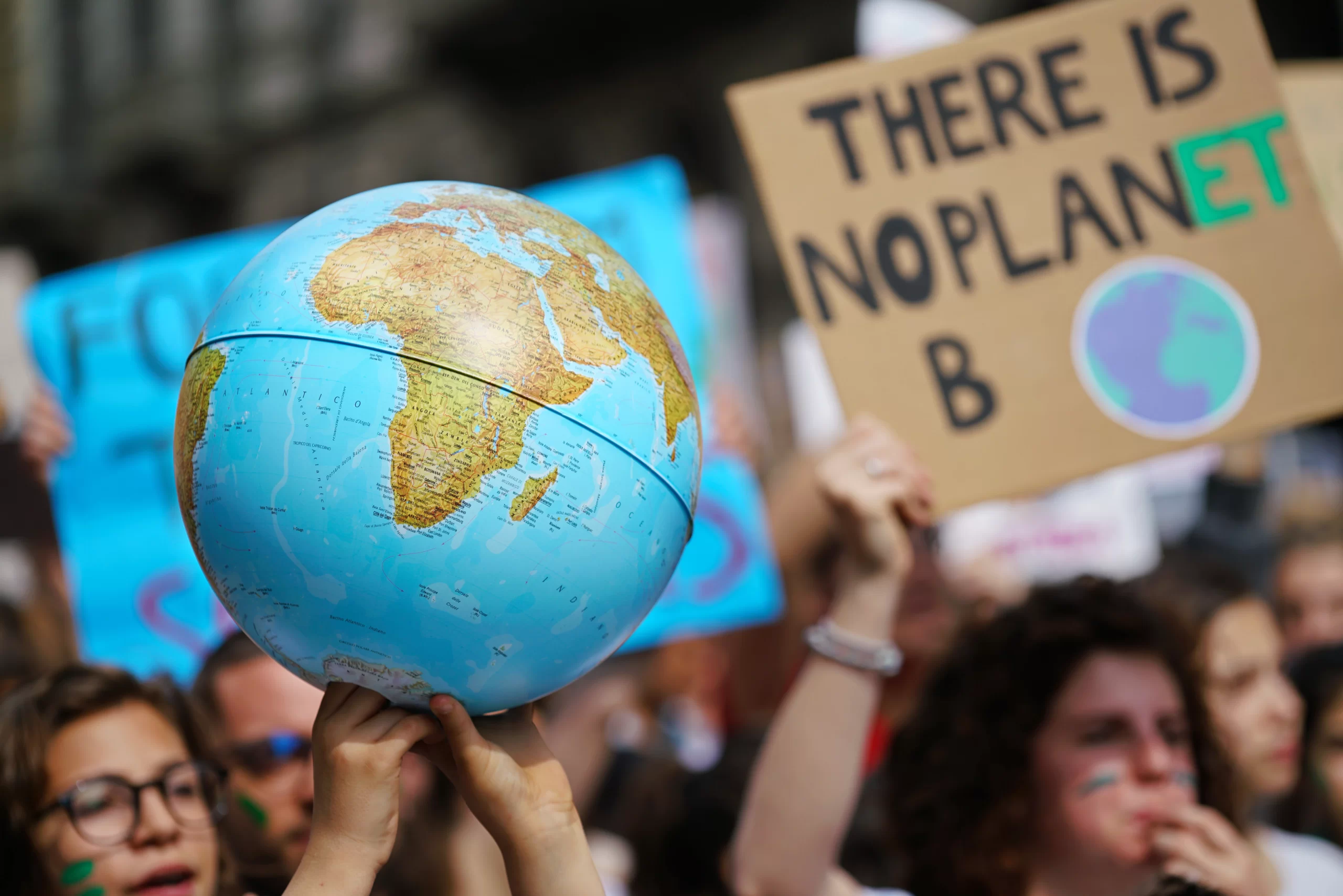Table of Contents Show
If you are a follower of #booktok or #bookstagram it is very likely you have come across one if not all three of Sally Rooney’s novels. In quick succession, Conversation With Friends (2017) and Normal People (2018) launched Rooney to a level of renown literary celebrity within her generation, the likes of which she never anticipated.

Rooney has been called the “first great millennial novelist” and the “Salinger of the Snapchat generation” (( Michallon, Chémence. “‘Normal People’ by Sally Rooney named Waterstones book of the year.” Independent, 29 November 2018. Accessed 26 August 2023. )) — an app she isn’t even familiar with. When asked whether she felt a responsibility to voice the millennial experience or saw herself as an ambassador to them, her humble response was:
“I feel no obligation to act as an interpreter […] In fact, I feel a lot of anxiety about being “chosen” or labeled the voice of a generation because I represent a privileged slice of that generation—I’m not really a representative emissary.”
Sally Rooney (( Hart, Michelle. “Sally Rooney Gets Real About Normal People, Her New Novel — And Finding Literary Stardom,” Oprah Daily. 18 April 2019. Accessed 26 August 2023. ))
Rooney’s novels, especially her latest Beautiful World, Where Are You (2021), epitomize this concept of ‘metamodernist’ literary fiction; her early works redefine romantic and platonic relationships in the 21st century within the context of the imperfect circumstances of life that perpetuate miscommunication in our social lives. Beautiful World dives deep into the author’s own insecurities, simultaneously bashing and defending fiction writing — accusing it of purposefully dissociating from reality by aggrandizing the personal lives of the few and minimizing the unavoidable crippling global crises.
“Our” (Societies) Understanding Of ‘Metamodernism’
Considering ‘metamodernism’ is actively shaped by contemporary art and culture, it is nearly impossible to pin it on a specific definition. Metamodernism represents a cultural reaction to environmental surroundings, influenced by political strife, economic crisis, environmental degradation, and societal collapse. As technology and by association society advance, culture evolves in response. “Metamodernism” or “hypermodernism,” whichever is your preference, is a term used to represent the shift in the way we see the world and decide to interact with it — culture and the arts are the documentation of this shift in a way that others sharing this experience can relate to.

The same goes with modernism, its inception was a reaction against a world whose gilded age disguised a deteriorating society at the beginning of the 20th century. These feelings of disillusionment prompted subjective realism and individualism in an effort to capture the overwhelming sensation of being obsolete in a meaningless world. (( J., Adam. “Modernism in Literature: Definition, Characteristics, Examples, and More,” Essaypro.com. 23 January 2023. Accessed 26 August 2023. ))
These feelings were echoed by its predecessor, postmodernism, during the second half of the 20th century following World War II. Postmodernists embraced the chaos of meaninglessness, rather than lamenting over the broken mold of society; introducing surrealist perspectives, magical realism, irony, and unreliable narrators. (( “What is postmodernism? What are the Characteristics of Postmodern Literature?” Literary Articles. 4 August 2013. Accessed 21 August 2023. ))

Now, at the start of the 21st century, metamodernism embraces the beauty and profound emotions of life along with the nihilism and existential dread of living. Objective and subjective views are interchanged, terms of demarcation are deconstructed, and collaboration and genuine honesty are encouraged as a result of this new perspective.
New generations understand that in order to adjust to this paradoxical universe we need to acknowledge the intrinsic relationship between opposites, the oscillation from creation to destruction, hope to doubt, optimism to realism, and sincerity to irony. (( Le Chunff, Anne-Laure. “An introduction to metamodernism: the cultural philosophy of the digital age,” Nesslabs.com. Accessed 23 Aug. 2023. )) In doing so, we can reach a deeper level of empathy towards lives that do not resemble our own but are true nonetheless — and, as a result, better understand the world we live in.
‘Metamodernism’ & Sally Rooney’s Realistic Portrait Of Life
Now that we understand the metamodernist perspective, we can better understand Rooney’s works as pillars of this new perspective. Rather than exemplify the absurdity of contemporary life through surrealist narratives and dystopian mirror images, Rooney’s novels are character-driven and written with sincere realism. Her protagonists are acting and reacting in response to one another and the historical crises within their ‘present’ reality.
In doing so, however, her writing has been criticized as plotless and overwhelming “existential malaise in the face of social ills.” ((Taylor, Brandon. “Sally Rooney’s Novel Of Letters Puts A Spin On Familiar Questions,” New York Times. 7 Sept. 2021. Accessed 23 August 2023. )) Without disparaging plot-driven narratives, one could describe artificial plot structures as miniature windows into characters’ lives or mazes for their characters to escape from.

Rooney’s metamodernist narratives allow for a broader spectrum for understanding her characters while also pointing out that ordinary daily life is enough of a maze. Rooney’s realistic portrayal of life extends beyond her characters to herself. Despite her first two novels incorporating metamodernist perspectives and garnering global success, Rooney admitted to struggling with dedicating her life to fiction writing. She incorporates this perspective in Beautiful World, Where Are You, through the correspondence between her two main female characters lamenting over the contemporary novel.
“The problem with the contemporary Euro-American novel is that it relies for its structural integrity on surprising the lived realities of most human beings on earth […] Do the protagonist break up or stay together? In this world, what does it matter?
So the novel works by suppressing the truth of the world — packing it tightly down underneath the glittering surface of the text. We can care once again, as we do in real life, whether people break up or stay together — if and only if, we have successfully forgotten about all the things more important than that, i.e. everything.”
Alice (( Rooney, Sally. Beautiful World, Where Are You, 2021. ))
Rooney is disparaging the very thing she is working on, while also drawing her readers’ attention to the ways her novel tries to adjust for these issues. She does this by formulating her stories through a metamodernist lens, revitalizing the abandoned desire for purpose in a meaningless world, while simultaneously creating a deeper purpose in fiction writing.
Both of which are evident in all her works.
Sally Rooney’s Early Works
Conversation With Friends and Normal People admittedly “poured” out of her — their inception overlapping and only getting published a year apart. This could be why we see strong recurring motifs in these first two books. These coming-of-age novels focus on childhood and adolescent trauma and the effects they have on personality and social interaction. Rooney also never fails to mention a character’s socio-economic background, not only highlighting its significance in a late capitalist society but also the obvious effect it has on the power dynamic between people. All of which impedes communication.

Conversation With Friends is unique in that it is Rooney’s only book written in the first person. The narrator, Frances, is an undergraduate student in Dublin, just like Rooney was when she wrote it. Frances had a volatile childhood growing up with an alcoholic father, causing her to emotionally recede. This manifested itself in Frances’s coming-of-age by causing her to distrust even her closest friends and perceive every social interaction as an emotional battle for power. Frances had learned to see vulnerability as a weakness and as a result other people’s vulnerability as a manipulation.

In her second novel, Normal People, Rooney wrote in the third person subjective, following the relationship of two young lovers who met in High School and entered University together. Connell, a popular and charismatic guy, suffers from insecurities tied to his lower-class background. He tries to make up for it in his charismatic personality, but these insecurities ultimately motivate his actions. Marianne, on the other hand, was born rich and yet she is an example that money does not buy happiness.
Marianne’s childhood trauma in a verbally and emotionally abusive household resulted in self-harm, internalized emotions, and behavioral issues such as lashing out at the people she loves. Both Normal People and Conversations With Friends are character-driven works that call attention to the fact that emotional trauma, even in small yet persistent doses, leaves a lasting effect not only on how people treat themselves but also on how they treat the people they love. They also demonstrate how class inequality — in addition to very real and major societal divides that create dysfunctional power dynamics, like race and gender — can significantly interfere with emotional connections and communication.
‘Metamodernist’ Themes In Beautiful World, Where Are You
Sally Rooney’s latest novel, Beautiful World Where Are You, shares a number of similar themes with her first two novels. It is obvious Rooney has a strong fascination with the obstacles and inner workings of peoples’ personal relationships. In all three of her novels, she consistently creates three-dimensional characters by incorporating their childhood, social class, and sexuality. Metamodernist themes, such as “new sincerity,” dissociation, and optimistic approaches to resolving tragedy are also prevalent in all her works.

However, in Beautiful World, Where Are You Rooney emphasizes a more meta-inner-personal perspective through its epistolary chapters. Unlike her previous novels, Beautiful World defends these metamodernist themes directly through the emails exchanged between the two writers, Alice and Eileen. Essentially mirror images of Rooney, Irish millennials nearing their thirties working in the literary industry, they discuss the same frustrations and insecurities that Rooney tries in her daily life.
Beautiful World, Where Are You cements Rooney as a metamodernist author. Essentially emphasizing the ‘meta’ in ‘Metamodernism,’ where she looks in on herself as a fiction writer and applies this new cultural perspective to what it means to write fiction in the digital age.
New Sincerity
A new theme that has risen from the metamodernist perspective is this concept of “new sincerity,” the juxtaposition of honesty and irony — or ‘ironesty.’ We see it when a character expresses their feelings sincerely (internally or externally) while simultaneously acknowledging how absurd it might seem to others (( Abramson, Seth. “Ten Basic Principles of Metamodernism,” HuffPost. 27 April 2015. Accessed 25 Aug. 2023. )) or when a character or artist expresses an ironic detachment from their reality to the point of evoking earnest emotions and perspectives. (( Abramson, Seth. “Ten Basic Principles of Metamodernism,” HuffPost. 27 April 2015. Accessed 25 Aug. 2023. )) This is most prevalent in Beautiful World throughout the email exchanges between the friends.
“I know that we agree that civilization is presently in its decadent decline in phase, and that lurid ugliness is the predominant visual feature of modern life. Cars are ugly, buildings are ugly, mass-produced disposable consumer goods are unspeakably ugly. The air we breathe is toxic, the water we drink is full if micro plastics, and our food is contaminated by cancerous Teflon chemicals.
Our quality of life is in decline, and along with it, the quality of aesthetic experience available to us. The contemporary novel is (with very few exceptions) irrelevant; mainstream cinema is family-friendly nightmare porn funded by car companies and the US Department of Defense; and visual art is primarily a commodity market for oligarchs.”
Eileen (( Rooney, Sally. Beautiful World, Where Are You, 2021. ))
Both Alice and Eileen mourn the state of the world and their inconsequential part in mending it. There are instances where both women go off on tangents that exaggerate and generalize many cultural structures that, despite what they say, do have some redeeming qualities. That does not mean what they say is not full of achingly earnest emotions or backed by an underlying truth. A truth that when acknowledged, validates that funny feeling we might feel towards these modern times.
Meta Sincerity
There is a second concealed layer of sincerity in Beautiful World, that which comes from the author herself. When she was a college undergrad writing Conversations With Friends the themes reflected her curiosities of interacting and being perceived in the adult world. Now, nearing thirty while writing Beautiful World, Rooney struggles with the concept of fiction writing as a career. Alice is no more ordinary than Rooney herself, compared to her character’s working-class love interest, Felix.

After disparaging the contemporary novel Alice admits,
“My own work, it goes without saying, the worst culprit in this regard. For this reason I don’t think I’ll ever write a novel again.” Eileen responds as devil’s advocate, “I agree it seems vulgar, decadent, and even epistemically violent, to invest energy in the trivialities of sex and friendship when human civilization is facing collapse. But at the same time, that is what I do every day.”
(( Rooney, Sally. Beautiful World, Where Are You, 2021. ))
Eileen does not defend the contemporary novel so much as to defend our desire for more entertaining stories. Considering both characters are created by the same writer, you can deduce — as well as from interviews with Rooney — that she often finds herself going back and forth over the same issue.
Rooney projects her honest and opposing emotions towards writing through her characters, acknowledging she is contributing to the mountain of books about the trivialities of sex and friendship; while also providing her underlying motivation for writing authentic characters that, like ordinary people, wrestle with the realities of our world and call attention to the ridiculousness of certain social forms.

There are other examples of this meta sincerity permeating contemporary art, where the artist projects their own emotions and perspectives into their art through their characters or stage personas. Bo Burnham is a key example, utilizing this form of honesty and irony in his comedy specials, most notably Make Happy (2016) and Inside (2021). The gap between the two specials was due to Burnham’s self-imposed hiatus from performing, with a pandemic tacked to the end of it. Burnham admits he has:
“I’ve never been great at performing. I’ve had panic attacks on stage, in front of 25,000 people. It’s very strange to me, and I feel like I signed up for a life that I wouldn’t have necessarily chosen if I had started now.”
(( Comedy Without Errors. “Inside In Context,” YouTube. 21 November 2021. Accessed 18 August 2023. ))
Unlike other comedians who try to hide any anxieties or true perceptions, Burnham incorporates these anxieties and emotions into his shows, ending Make Happy by singing to his audience:
“Part of me loves you / Part of me hates you / Part of me needs you / Part of me fears you / And I don’t think that I can handle this right now.” (( Burnham, Bo. Make Happy, Netflix. 2016. ))
Just like Rooney admits to being a writer who does not necessarily want to be writing but feels she needs to write, Burnham is a performer who doesn’t want to be performing but feels it is already the life he has chosen for himself. This is only one of the many similarities between these two artists. All of which correspond to the ‘metamodernist’ perspective.
Dissociation
It would be impossible to talk about metamodernism without mentioning the internet, a digital world where we are surrounded by more strangers than ever possible while also being closer and able to make faster connections. The digital world is a stage and not only do we present ourselves differently on that stage than in reality, people may perceive us in an entirely different way.

Although social media hardly ever makes an appearance in Sally Rooney’s works, dissociation is often acknowledged as a symptom of the times. Dissociation in regards to self-identity versus projected self is prevalent in metamodernism for the simple reason that it is a universal experience, further streamlined and perpetuated by social media.
Rooney’s character Alice breaks under the pressure of the performance involved in interviews and being a public figure.
“What do the books gain by being attached to me, my face, my mannerisms, in all their demoralizing specificities? Nothing. So why, why, is it done this way?
It makes me miserable, keeps me away from the one thing in my life that has any meaning, contributes nothing to the public interest, satisfies only the basest and most prudent curiosities, and serves to arrange literary discourse entirely around the domineering figure of ‘the author,’ whose lifestyle and idiosyncrasies must be picked over in lurid detail for no reason. I keep encountering this person, who is myself, and I hate her with all my energy
Alice (( Rooney, Sally. Beautiful World, Where Are You, 2021. ))
Alice goes on to describe all that she hates about her perceived self, the person the public interprets and criticizes (or praises) — someone, she admits, is not who she really is. This is also true for Rooney. More than an anxiety about her work being well received, Rooney struggles with the celebrity of being widely known. Ironically, all of Rooney‘s novels have bits of her life and soul, and knowing her better only deepens the meaning of her work.
Perhaps this is the very reason she is so sensitive to scrutiny and misinterpretation. Most writers, especially Rooney, use their own experiences and flaws to create realistic and relatable characters. When you feel you have given your readers the most intimate aspects of your soul it might seem greedy for interviewers and fans to want more. The artist becomes a commodity and their life and perspectives are content to be marketed.
Dissociation is not only a result of this but a coping mechanism.
Dissociating From The Audience
Beautiful World, Where Are You has an added layer of dissociation regarding the audience. Alice alludes to this when talking about “the problem with the contemporary novel” mainly coming from the pay gap between authors and the “ordinary people” they write about.
“The truth is they know nothing about ordinary life. Most of them haven’t so as glanced up against the real world in decades. These people have been sitting with white linen tablecloths laid out in front of them and complaining about bad reviews since 1983.
I just don’t care what they think about ordinary people. As far as I’m concerned, they’re speaking from a false position when they speak about that.”
Alice (( Rooney, Sally. Beautiful World, Where Are You, 2021. ))

Ironically both fictionalized Alice and Sally Rooney fall under this criticism; both millionaires they are actively detached from the authentic economic struggles of ordinary life. This irony does not escape Rooney. She calls attention to it in a sincere effort to explain her struggle with a career in writing stories that people can relate to while its payroll actively impedes her ability to do so.
“The amount of money you are paying me is actually actively making me not be able to relate to you on a deep level.”
Bo Burnham (( Comedy Without Errors. “Inside In Context,” YouTube. 21 November 2021. Accessed 18 August 2023. ))
Optimistic Approach To Resolving Crisis
With new technologies and the escalating global instability, metamodernism reflects on previous cultural philosophies and their impact on the world. Previous generations’ nihilistic approach to dealing with the emotional burdens that crises generate has fostered a lack of self-worth and accountability. Millennials and the children of the 21st century are reimagining a meaning in life within a meaningless universe, and it is symbolically positive.
This new cultural philosophy acknowledges global crises and our hand in creating them. By accepting this responsibility we simultaneously acknowledge that previous ways of life were destructive. In the face of economic, political, and climatological collapse, metamodernists choose to remain optimistic and engage their communities proactively. (( Abramson, Seth. “Ten Basic Principles of Metamodernism,” HuffPost. 27 April 2015. Accessed 25 Aug. 2023. ))
“I would like to be helpful in some way to the project, whatever it is, and if I could help only in a very small way, I wouldn’t mind, because I would be acting in my own self-interest anyway […]”
Eileen (( Rooney, Sally. Beautiful World, Where Are You, 2021. ))
There may be some who would argue that publishing a fiction novel that talks about global economic and ecological issues does nothing to help the world. This is exactly the kind of thinking that does not help. In lieu of doing nothing, talking about and acknowledging the ridiculously horrendous state of the world is one of the many first steps in making a difference.

Not only does Rooney acknowledge the problematic social structures that influence our personal relationships — like gender, class, and monogamy — she calls our attention to our looming destruction and the painful truth: that we did it to ourselves. Rooney’s characters discuss climate change, single-use plastics, capitalism, and politics. Aside from Rooney’s own devotion to these truths that plague our reality, her characters’ acknowledging these issues mirrors realistic and everyday conversations most adults find themselves in.

Whether it is a deep intellectual discussion or an offhanded comment about the summer heat in late October. Rooney making a difference in these issues is not the point of this theme in metamodernism, but rather the mere notion that ordinary life and the conversations between adults cannot avoid these issues because they influence our daily lives. It would be impossible to properly set a novel in the current ‘present’ without talking about these issues as well.
How Sally Rooney Shapes ‘The Metamodern Novel’
If metamodernism is the cultural reaction to present lived experiences, then the metamodernist novel has no choice but to speak to these experiences. Whether they be about deteriorating restrictive social structures like monogamy or gender norms, outsourced abusive labor producing single-use plastics that pollute our oceans and inseminate ocean life with microplastics that we consume, or the ever-expanding pay gap between the social classes.
Rooney’s works catalog the ‘present’ and illustrate the sentiments and struggles that plague most people. Just as we look back on the works of Virginia Woolf, James Joyce, and Jacqueline Susann to glimpse into the minds and lives of ordinary people from the past. Rooney does her best to paint the realistic still life of the ‘present,’ which is no easy feat for a time when each major historical event is replaced shortly after by another breaking news of a tragedy.
Although Rooney’s latest, Beautiful World, Where Are You, stands out as a metamodernist work, her early books — and perhaps even her future books — are foundational for metamodern literature and documenting the 21st-century experience. And in no way does Rooney stand alone. Comedy, television, music, and cinema have all felt this shift towards sincerity, acknowledgment, and accountability; paving the way for a new era of entertainment that makes you a part of the chaos in the world, rather than hiding away from it.
“What if the meaning of life on earth is not eternal progress towards some unspecified goal — the engineering and production of more and more powerful technologies, the development of more and more complex and abstruse cultural forms? What if these things just rise and recede naturally, like the tides, while the meaning of life remains the same always — just to live and be with other people?”
Eileen (( Rooney, Sally. Beautiful World, Where Are You, 2021. ))
That is why Rooney’s metamodernist structure of writing not only functions as the voice of a generation but epitomizes a new cultural era.
The Future Of ‘Metamodernism’
We can expect to see more of Rooney’s ‘metamodernist’ novels in the future. As for the ones that heralded her success, you can find television adaptations of Conversations With Friends (2022) and Normal People (2020) on Hulu. Sally Rooney is one of many millennial writers paving the way for metamodernism. A few that should make your list are Anna Wiener, Ling Ma, and Jia Tolentino. (( Lahsaiezadeh, Kayti, “18 Millennial Writers You Should Be Reading Right Now,” bookbub. 10 September 2020. Accessed 22 August 2023. ))
If you are interested in other examples of metamodernist stories you can watch any of Bo Burnham’s comedy specials, Oscar-winning Everything, Everywhere, All At Once (2022), Rick and Morty (2013-present), Community (2009-2015), Hulu series Broad City (2014-2019) and Donald Glover’s Atlanta (2016-2022), as well as much of his music (especially “This Is America”) — to name a few.
Welcome to the ‘metamodern’ age. The Daily Fandom sincerely hopes you enjoy yourself and love the ones you’re with!
